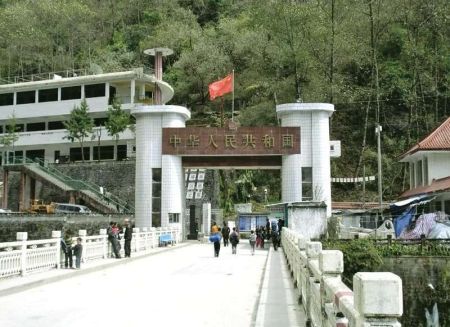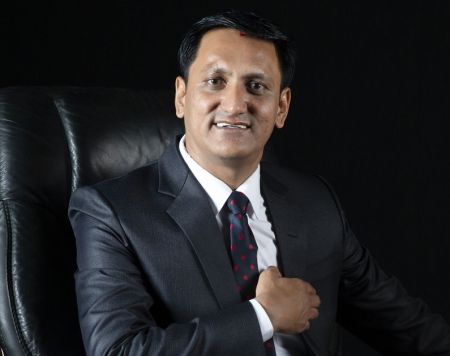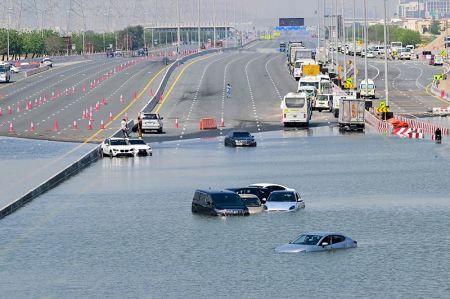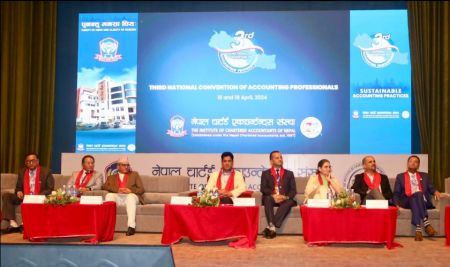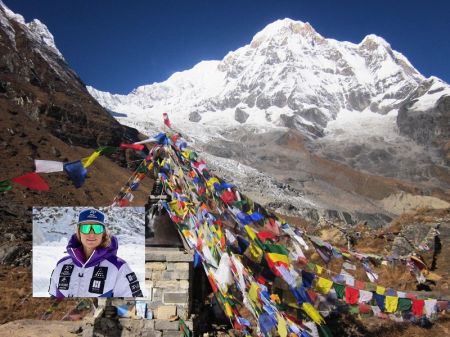By Sharu S Rangnekar
Change is constantly with us from birth to grave. However, the changes we experience fall into 3 broad categories: continuous change, discontinuous change, tsunami change.
Continuous Change
Continuous change takes place continuously e.g. getting older by one day everyday. We do not pay much attention to this change and, by and large it manages itself. There is very little change day to day. Although over a period we look older or the hair becomes gray – or some of them fall out. Over a period, the change is significant but since it is at a slow rate, we get accustomed to it.
Discontinuous Change
Discontinuous change makes a significant impact on our life immediately. The first discontinuous change we had was getting born. An embryo comfortable in the mother’s womb is thrown out one day in a totally different world and our first reaction to this change is protest (paaan). However, we do not remember this change. Perhaps the first discontinuous change we may remember is the first day at school. In my case, my grand-father carried me on his shoulder to the school and deposited me in the class. He admonished me, “Don’t come out of class; I am sitting in the verandah and if I see you coming out of the class, I shall break your leg.” So I sat inside the class crying. There were about 30 other children sitting around me also crying. When I am near a school on an opening day, I go to the preparatory class. Inside the class, there are 30 children crying; outside the class there are 30 mothers crying. It is their way to coping with the discontinuous change. From a familiar friendly atmosphere of the home, the child is pushed into an alien atmosphere of the school. Nobody is familiar to him. At least now most of the teacher are female and seem to be soft. In my times there were harsh looking male teachers with big mustaches. The cane was a part of their uniform and they banged the cane before sitting down – creating palpitation all over the class.
My mother had tried in her ways to prepare me for this discontinuous change. She asked me whether when I grow up I would like to go to office like my father sitting in a car. “Of course,” I said, “yes”. Then she said, “You have to go to school first.” I told her that I did not want to go to school. Then she told me the only alternative will be to wash utensils. At that age of five that was not a bad alternative but the tone in which my mother put it, it seemed like great disaster. I was made to feel that I was at cross roads – Go to school and eventually to office in a car like my father or wash utensils like the servant. Even then this did not convince me to go to school. Discontinuous changes can take a long time to be accepted.
Thereafter there are series of discontinuous changes: Getting a job and getting into relatively rigid office discipline; Getting married and getting into two-person democracy; Getting children with the tribulations involved.
In each case there was clearly a give and take. Some benefits and some hardship – and we have gone through numerous discontinuous changes.
Tsunami Change
The third kind of change is where everything around changes – like the havoc created by the tsunami wave. The benefits are hardly comprehended and the hardships are very clear. How does one get prepared for Tsunami change?
One way is to start with the dictum: “TINA” (There Is No Alternative). We are not happy with the situation but it is inevitable. The case in point is the female education. It started in 1850 with a great deal of opposition. The proponents of female education were attacked because the opponents said: “What have women to do in their life? - Cooking and bringing up children. That can be learnt in the house itself with apprenticeship to the mother. The girl can learn cooking under the supervision of mother and can also learn to bring up children – particularly in those days when mother had 8-10-12 children. The first 2-3 children were brought up by the mother, the rest were brought up by eldest sister who learnt skills as an apprentice. What is the point in the women learning Kalidas and Shakespeare?”
Over a period, the process of attrition played its role to make the female education accepted. Initially, it was stressed that widows should have education so that they can have the ability to sustain themselves economically. Mostly the widows attended these schools so they were known as “Bodkyanchi Shala” (School for the shaven-headed) – as the heads of the widows were shaved in those days.
Over a period, the benefit of the female education became evident and today even if a girl has graduated and is sitting at home doing nothing particularly, the neighbour advises that she should join a computer class.
However, even today there are opposition groups - even in a city like Bombay. The two girls of a community were threatened because they were persuing their education which the opponents felt was against the religion and would spoil the girls for their traditional role of good housewives.
This opposition is reducing and the female education is getting accepted – although it has its effects and side effects. I worked in pharmaceutical industry where we believed that if a medicine has effect it has side effects also. If it has no side effects it has no effect also. So every change has its effects and side effects. The female education is a very strong medicine. It is effective to make the women contribute more significantly to the economic development but the side effect is its impact on domestic peace. So here it is a Tsunami change which took over 100 years to get accepted. In case of many changes that much time is not available – as in the case of natural Tsunami disaster. There the people are forced to accept unpleasant alternatives to carry on in life.
Another example of tsunami change is the role of horse drawn “Tongas” in transportation. Fifty years ago every railway station had Tongas which provided transportation to the travelers between station and their residences. Then came the tsunami change replacing Tongas with autorickshas and buses and Tongas have vanished altogether with the horses and the Tongawalas. Many of the tongawalas literally starved to death with their horses as they could not master the new technology of driving autorickshas and buses. However, this change took place over 25 years and did not create a strong backlash. I remember only one movie where DilipKumar as a tongadriver took a bet to beat a bus to stop the bus-route. In the movie, by driving through shortcuts, he could beat the bus. But in real life the tongas lost forever.
There are two other Tsunami changes which are making waves. One is in Singur and Nandigram where the agricultural land is being given for industrial development. There have been bloody battles. However, the logic of this tsunami change is obvious. The technological reforms in agriculture have made it possible for less and less land to provide food grains for more and more people so the land has to be released for industrial production. The land-owner who is traditionally attached to the land is refusing to give it up. Similar situation happened in Russia when the land had to be taken away from the farmers to form communes and it resulted in hundreds of thousands of farmers getting killed by the Russian army. However, in the long term it resulted in loss of production and Russia had to import food-grains to support its people. The present situation is very much different because it follows and not precedes agricultural productivity. If the farmer insists on pursuing agriculture he is bound to get caught in consequences. It is often said in America “agriculture is a passport to poverty” and that has become the sign of development.
Another tsunami change on the horizon is the abolition of traditional retailers in favour of large scale operators. The traditional retailers are opposed and started throwing stones at Ranchi. But here also the requirement of tsunami change is clear. The present way of operation of the traditional vegetable vendors, fruit vendors, grocer etc., is highly inefficient in terms of cost, convenience and time. The turnover of typical vegetable vendor is so low that his margin has to be very high to make him survive. The whole chain of middlemen are involved which makes the operation very costly. When the farmer gets hardly Rs. 3/- for one kilo of onions the consumers have to pay Rs.15/- per kilo. The large retailers buying directly from the farmers and selling directly to the consumers are going to make the operation much more cost effective. Furthermore, modern technology can be used to make the product available to consumer more conveniently and in the form he can use very easily. A traditional vegetable vendor can hardly protect the product from dirt and dust and that is the death-knell for the traditional vendor.
However, these large changes involving millions of people thrown out of their traditional jobs in a matter of few years and their inability to learn new technology of retailing is going to create a great deal of havoc.
Acceptance of Change
In such situations the society and the government can control the process to give the time for acceptance of change. Acceptance of changes comes in three phases:
- Knowledge
- Belief
- Behaviour
For the change to be accepted a sustained campaign has to be conducted to make people realize the advantages of the change. This is obviously a long term process and the society may not have the time for this change.
TINA Factor
You can swim against the current but you can’t swim against gravity:
I was sitting with a friend of mine who was an amateur fisherman near a stream of water. The stream was moving fairly fast and most of the fish were swimming with the current. However, I found about 10% of the fish were swimming against the current. I asked my friend, “Why they are swimming against the current?” He said, “This is breeding season for this fish and the females are going against the stream to lay eggs in their chosen territory.
The stream proceeded for another 10 meters and jumped into a waterfall. Some of the fish who went down with the waterfall were trying to swim up the waterfall. But they were not successful. Looking at that my friend remarked, “You can swim against the current but you can’t swim against gravity.” There are some tsunami changes. People try to resist these changes. But they can not succeed because you can swim against the current – but not against the gravity.

In 1951 when I started my career there were about 3 thousand railway stations in Indian and outside each station there was a Tonga stand. These 3 thousand stands plus others in the towns covered nearly about 1 lakh tongas.
The tsunami change started with autorikshas and buses taking away the passengers. The tongas made efforts to resist the change. In the film Naya Daur, the hero acted by Dilip Kumar races with the bus with his tonga and defeats it. That was a reel life. In real life the tonga could not stand the competition. The tongas were burnt as kindlewood, the horses died and so did the tongawalas. They could not fight against gravity.
The similar contest is going on in Singur & Nandigram by agriculturist and In Ranchi and other towns by Small Scale Retailers against Reliance. This again is a competition where they are going against the gravity and cannot win.
The alternative is to create the TINA factor i.e There is no alternative. After the First World War, Turkey was in shambles and Kemal Ataturk took over the nation with the slogan “There is no alternative”. Overnight he abolished the ritualistic religion and the banned the veil as well as the Turkish cap which were seen as symbolic of ritualistic religion. The most significant change he made was in the script. The Turkish language which was written in Arabic script, he made it compulsory to use the Roman script. These changes were not universally welcomed but he had the traditional power of the army up his sleeves and so could ensure implementation of the changes almost in a single day with the slogan “TINA” i.e There is no alternative.
The changes he made in this way kept on smoldering the rebellious feeling and in the end of last century the religious parties again made a come back trying to bring Turkey back to the religious mould. The army superseded the parliament and kept the reforms going.
The process thus goes through persuasion route i.e Knowledge, Belief and Behaviour to get accepted over a period with the opposition getting converted. Thus the changes introduced by the female education can get commented adversely but are unlikely to be thrown out by any democratic process. In fact, democracy also is a tsunami change which is based on the tenets of equality. The traditional societies were based on inequalities: a superior caste, a superior religion, a superior sex. These gave authority to rule over the others. However, democracy tries to establish equality. In fact all people are not equal but in the concept of democracy they have to be treated as equal and given a chance to become equal.
A case in this point is a rule made in New York that all public buildings must have ramps so that the physically disabled people will try to have the mobility similar to normal people. Somebody calculated the cost of providing ramps and suggested that it will be cheaper to keep disabled people home by giving them pension. The answer was the solution to disability is not charity but to create as much equality as it is possible.
Even the controversy over reservations can be seen in this light. Reservations cannot create equality. In fact they tend to emphasize inequality. However, by creating reservations more and more people are pushed towards equality.
Another case in this point has been the position of scheduled castes, scheduled tribes or otherwise backward classes as against Muslims of India. At the time of independence, Muslims had 15% of all important positions in the government thanks to the special protection given by the British Raj. At that time scheduled castes, scheduled tribes and OBCs together were much less than 15%. Today after 60 years of independence the scheduled castes, scheduled tribes and OBCs are nearly 30% while the Muslims have come down to 5%. So the reservation policy of British Raj created permanent inequality and when it was removed the Muslims suffered economically. The situation is somewhat similar to Negroes in America. Negroes are also 15% of American population but in three areas they are much more than 15% - In Olympic gold medals they have the majority. In art particularly music they are over 25% and in crime they are over 60%. These three areas do not require any support from the society to score. Individual abilities can sustain.
Similar is the position of Muslims in India. They are in the same 3 areas where they are more than 15% - Sports, Films and Crime. So to create equality there has to be sustained efforts to support the weaker to be equal. This is obviously the tsunami change and will be resisted at every step - but to retain democracy it will be essential to move towards this end.
In this process the persuasion of knowledge, belief and behaviour have to be used to make the tsunami change ultimately accepted in the society. This is essentially what is meant by management of change. '
(The writer is a popular consultant and author of management classics: “In the Wonderland of Indian Managers” and “In the World of Corporate Managers”.)






